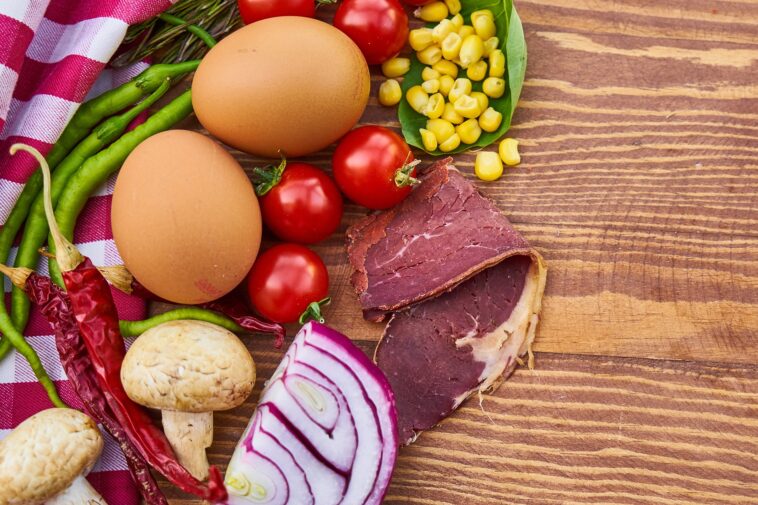13 Culinary Secrets Only Restaurant Chefs Know
At Bright Side, we believe cooking should be fun—not frustrating. That’s why we’ve rounded up 14 smart culinary hacks that chefs use every day. These tips will help you save time, reduce stress, and cook like a pro.
Whether you’re slicing cake without the mess or boiling eggs just right, these tricks will instantly upgrade your kitchen skills.
1 – How to Fry the Perfect Burger Patty (Chefs Cooking Tip #1)
Want your burger to cook faster and more evenly? Before frying, press a small dimple in the center of each patty. This simple chef trick helps the meat stay flat as it cooks. It also prevents the puffed-up center that can ruin the texture and presentation.
Use this pro tip for juicy, evenly-cooked burgers every time.
2 – How to Cut Cake Without Ruining It
Tired of cake sticking to the knife and ruining those clean slices? Try this simple hack: run your knife under hot water, then dry it before slicing. The heat helps the blade glide through frosting and layers smoothly, giving you perfect, mess-free cake slices every time.
A small trick with a big visual payoff—especially for birthdays and celebrations!
3 – Making a lemon juice spray
Turn a lemon into a natural spray bottle with this clever kitchen hack. Insert a small spritzer top directly into the lemon, and you’ve got an instant citrus spray—perfect for salads, seafood, or cleaning.
When the juice starts to slow down, give the lemon a gentle squeeze to release more. It’s a quick, eco-friendly way to get fresh lemon juice anytime.
4 – Determining portion sizes with your hand
No kitchen scale? Use your hand for quick portion estimates:
-
Fingernail = 1 teaspoon (mayo, butter, margarine)
-
Palm = 3.5 oz of meat or fish
-
Two handfuls = 1 oz of snacks like chips or crackers
-
Fist = 1 cup of grains, soup, or chopped fruit
-
Thumb = 1–2 tablespoons of cheese or peanut butter
It’s a smart, no-tools-needed method for measuring ingredients on the fly—handy and reliable!
5 – Chefs Cooking Tip: Keep Your Knives From Slipping
A slippery knife handle can be dangerous in the kitchen. To improve your grip, wrap a few rubber bands around the handle. This adds friction and helps you hold the knife securely, even with wet or greasy hands.
It’s a simple safety trick that makes cutting safer and more controlled, especially during long cooking sessions.
6 – How to Pick the Right Lemon
Not all lemons are created equal! If you want more tartness, choose a lemon with a thin, firm peel—these tend to be the most sour. For a milder flavor, go with lemons that have a softer, thicker skin.
This quick test helps you pick the perfect lemon for any recipe, whether you’re making salad dressing, lemonade, or lemon bars.
7 – Frying a sausage
Sick of sausages that are burnt outside but raw inside? Here’s a simple fix: make small shallow cuts along each sausage before frying. Then cook them slowly over low heat.
These cuts allow heat to distribute evenly, helping the sausages cook through perfectly—crispy on the outside, juicy on the inside.
8 – Checking if an egg is fresh
Not sure how long those eggs have been in the fridge? Crack one onto a white plate and take a close look. If the egg white spreads out too much and looks watery, it’s likely past its prime.
However, if there are no green, gray, or black spots, the egg is probably still safe to eat. This quick visual test helps you avoid food waste and stay safe in the kitchen.
9 – How to Keep Sliced Cake Fresh
Don’t let your leftover cake go stale! After slicing, attach pieces of bread (like toast) to the exposed edges using toothpicks. The bread acts as a barrier, protecting the cake from air and locking in moisture.
This clever trick keeps your cake soft, fresh, and delicious for days—no need for fancy storage.
10 – How to Boil the Perfect Egg
Boiling eggs just right comes down to timing. Whether you love a runny yolk or a firm center, here’s your go-to guide:
-
2 minutes – Runny yolk, very soft white
-
4 minutes – Firm white, soft runny yolk
-
6 minutes – Mostly cooked yolk with a creamy center
-
8 minutes – Fully set white with a soft yolk
-
10 minutes – Hard-boiled with fully cooked yolk and white
Use this chart to get your perfect boiled egg every time—no guessing needed!
11 – How to Keep Leafy Greens Fresh Longer
Tired of wilted spinach or soggy lettuce? Wrap your leafy greens in aluminum foil before placing them in the fridge. Foil helps regulate moisture, keeping your greens crisp and fresh for up to a week or more.
It’s a simple storage hack that reduces waste and saves money!
12 – How to Reheat Pizza Like a Chefs
Reheating pizza in the oven can leave it dry and chewy. To keep it soft and delicious, lightly spray your pizza with water before warming it up. The added moisture helps restore its fresh-out-of-the-oven texture and keeps the crust from turning hard.
This trick works for both homemade and leftover delivery pizza!
13 – Cutting steak correctly
Want your steak to be tender and easy to chew? Always slice it against the grain. This technique cuts through the muscle fibers, making each bite softer and more enjoyable.
It’s a simple move that turns a good steak into a restaurant-quality meal at home.
Got a favorite kitchen hack of your own? We’d love to hear it! Whether it’s a time-saving trick, a family-secret technique, or a clever cooking shortcut, share your culinary wisdom in the comments.
Your tip might just inspire someone else to cook smarter—and have more fun in the kitchen!














